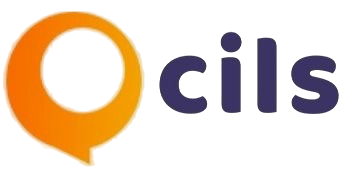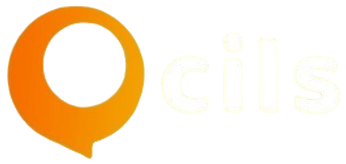When you type a query into Google, its algorithm quickly scans and ranks billions of web pages to find the most relevant results. It considers factors like keywords, site authority, and user intent to present you with a tailored list of links, snippets, and features. Often, Google shows direct answers at the top—sometimes eliminating the need to click through to any site.
What Happens When You Search Something on Google?

What Happens When You Search Something on Google?
You’ve probably Googled something today — maybe even before you read this blog. But have you ever stopped to think about what actually occurs when you click on that teeny-tiny magnifying glass or press the “Enter” key?
It may seem instantaneous, but it is a sophisticated array of tasks that Google does within milliseconds to return those search results. If you are a curious web surfer, someone in online marketing or SEO, it’s an interesting thing to know and also helpful.
Now, today in this blog post, we’re going to demystify what happens when you Google something — in plain English that everyone can understand.
Step 1: You Type a Question
It all starts when you type words (or voice them) into the search box of Google. The words or the voice which get searched in search bar is called Search Query.
Google’s job is to understand what you’re saying — not always what you say. That’s because the same search query can be phrased differently by different people. For example:
- "How to bake chocolate cake"
- "Step by step chocolate cake recipe"
- "Common chocolate cake ingredients"
These are all different but all with the same purpose. Google uses advanced natural language processing (NLP), machine learning, and AI (like BERT and MUM) to figure out what you really mean.
Step 2: Google's Algorithm Takes Action
After you’ve posed your question, Google isn’t scouring the live web. It’s searching a massive database known as the Google Index. It’s similar to a gigantic electronic library with hundreds of billions of pages.
The algorithm — Google’s secret sauce — runs through this index and ranks the results against hundreds of factors. They are :
- Relevance to your question
- Quality of content
- Page speed
- Mobile-friendliness
- Authority of the website (from backlinks)
- Originality of the content
- Location, and search history (if you're signed in)
This is where Search Engine Optimization (SEO) kicks in. Sites that are well maintained as per SEO standards are bound to be on top.
Step 3: Ranking the Results
Google rankings are determined by an incredibly advanced algorithm that considers more than 200 factors. We don’t know them all (well, maybe Google developers), but here are some of them that are known and confirmed :
1. Keywords :
Is the page using the words or phrases that you have searched for?
2. Backlinks :
Do there exist reliable sites referencing it?
3. User Experience :
Is the website responsive, simple, and fast?
4. Content Quality :
Is it original, helpful, and informative?
5. Search Intent :
Is the content aligned with what users truly seek?
Google is trying to bring back the most useful, relevant, and authoritative answers — not necessarily the best-optimized ones.
Step 4: Verifying the SERP (Search Engine Results Page)
Then there is the SERP, or Search Engine Results Page. This is what appears after the enter button is pressed.
The SERP is no longer a list of blue links these days. It’s an interactive UI with the following characteristics :
1. Featured Snippets :
Quick answers presented at the top
2. Knowledge Panels :
Info boxes on the side
3. People Also Ask :
Related questions and answer
4. sLocal Pack :
Google map business listings
5. Videos, Images, News, and Shopping tabs
Google adjusts the SERP based on the type of search. When you enter “weather today,” you won’t see a list of blog posts, but rather a weather gadget.
Step 5: You Click on a Result (or Don't)
As you look at the results, you decide: click a link, refine your search, or maybe not click anything at all (a zero-click search).
Zero-click searches occur when Google gives your answer on the SERP itself — e.g., “What is the capital of France?”
To website owners and marketers, this matters. It’s no longer just about ranking — it’s about providing so much value that people will click through.
Step 6: Google learns about your behavior
Your response to the results is what informs Google. For instance :
- If most users select one result and stay on the page (low bounce rate), Google may rank it higher.
- If the users bounce off immediately or go back to the SERP, then maybe the result was not helpful.
This is also referred to as user behavior signals, and though not the sole determinant, it may influence rankings over the long term.
Bonus: What About Paid Results?
At the top and bottom of most SERPs, you’ll find ads. They’re Google Ads — sponsored spots where companies bid on keywords.
Advertisers pay per click (PPC), and placement is based on the
- Bid price
- Quality score (relevance and landing page quality)
- Ad performance history
SEO is organic traffic, while PPC is paid traffic. They are not mutually exclusive, and astute marketers generally employ a combination of both.
Why Should Digital Marketers Study This Process?
If you work in digital marketing or SEO, knowing how Google operates isn’t a choice — it’s necessary.
- It allows you to create better content that matches search intent.
- It's all about learning how to make your site technically and user-friendly optimized.
- It makes you understand SEO reports and analytics more effectively.
When you know how Google works, you’re no longer guessing — you’re planning..
How to Get Yourself Seen in Google Search
Now that you know what’s happening behind the scenes, here’s how you can improve your chances of being ranked:
1. DKeyword Research :
o Know what others are looking for
2. Create High-Quality Content :
Answer questions fully, accurately, and comprehensively.
3. Seo-Friendly On-Page Components :
Use headings, meta titles, and structured data.
4. Build Backlinks :
Other authentic websites should link to your content.
5. Improve Technical SEO :
Optimize for speed, mobile-friendliness, and clean code.
6. Track and Tweak :
Track with tools like Google Analytics and Search Console.
Final Thoughts: Google Search, Demystified
The next time you’re searching for something on the web, keep in mind: a lot can happen in less than a second. Google doesn’t “just know” the best results — it employs an incredibly sophisticated system of crawling, indexing, ranking, and user feedback to know that.
And for both SEO specialists and online marketers, every step of the process presents an opportunity to be heard, connect with your audience, and establish online. So whether you’re looking for recipes for dinner or search engine optimizing a client’s site, you’ll know what’s going on behind that familiar search box.






